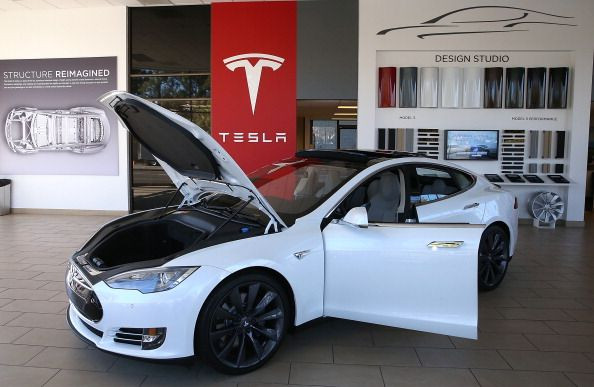Tesla Tries Another Trick To Sell Its Priciest Cars

Tesla (NASDAQ:TSLA) still isn't letting reservation-holders place orders for the cheaper versions of its new Model 3 sedan. However, a few days ago, it notified would-be buyers that all orders placed by Oct. 15 would be delivered by year-end, making them eligible for the full $7,500 federal electric vehicle tax credit, which will start to phase out for Tesla purchases in January.
This article originally appeared in The Motley Fool.
This is just the latest move by Tesla to pump up sales of its most expensive Model 3 variants -- and of the even pricier Model S sedan and Model X SUV. It also adds to the evidence that Tesla simply cannot afford to sell Model 3s for $35,000, the advertised starting price.
Boosting average selling prices has been a priority
Tesla delivered its first Model 3 in mid-2017. To keep production as simple as possible, it only built rear-wheel-drive models with the long-range battery for the first year or so. That variant has a starting price of $49,000 (before options and any applicable tax credits).
A few months ago, Tesla began producing dual-motor all-wheel-drive versions of the Model 3, which are even pricier. This was part of a deliberate strategy to shift production to the most expensive -- and thus most profitable -- variants. (Indeed, Tesla reported earlier this month that more than half of the Model 3s produced during Q3 were dual-motor versions.)
However, many reservation holders may not be able to afford even the cheapest Model 3 variant currently in production. While there are hundreds of thousands of outstanding reservations, Tesla has been allowing nonreservation holders to order the Model 3 versions currently in production (essentially skipping the line) since July. Nevertheless, the lead time has shrunk to a maximum of four weeks for rear-wheel-drive models and eight weeks for dual-motor models.
A new sales tactic
Last week, Tesla rolled out its latest ploy to generate orders for the more expensive versions of the Model 3. The electric-vehicle maker stated that it would guarantee delivery by the end of 2018 for all orders placed by Oct. 15. That's critically important, because the federal tax credit available for Tesla purchases will fall from $7,500 to $3,750 on Jan. 1, 2019, before declining again to $1,875 on July 1, 2019 and phasing out entirely at the end of next year.
In effect, Tesla just told potential customers that they need to order ASAP to get the biggest possible discount. However, they must choose between options starting at $49,000 (before the tax credit).
Adding to the intrigue, Tesla appears likely to start deliveries outside of North America in early 2019. It will probably spend most of the first half of next year fulfilling demand for the higher-priced Model 3 variants outside of the U.S. and Canada. As a result, the $35,000 base model probably won't become available (in the U.S. or anywhere else) until the spring of 2019.
As a result, many U.S. reservation holders who are waiting for cheaper versions of the Model 3 may not even get the $3,750 tax credit that will be available during the first half of 2019. They will more likely get the $1,875 credit that will apply to Tesla vehicles delivered in the second half of next year.
Thus, there's a big incentive for U.S. reservation holders to place an order now, as they won't save nearly as much money as they may have expected by waiting for Tesla to begin building cheaper Model 3s. It also means that the most price-sensitive reservation holders may not be able to afford a Model 3 after all, as the post-tax-credit price could be $5,625 higher than originally advertised.
Survival could be at stake
Pulling in more orders for the priciest Model 3 variants is of the utmost importance for Tesla. The company had $2.2 billion of unrestricted cash and equivalents at the end of June, after having burned nearly $2 billion of cash in the first half of 2018. Furthermore, it has about $1 billion of debt coming due over the next six months.
Tesla has stated that free cash flow will be positive in the second half of 2018, which would allow it to pay off its debt maturities. (It would also make it easier to refinance.) However, that forecast is presumably based on selling a super-premium mix of Model 3s.
By frontloading production of the most expensive Model 3 variants, Tesla may be able to avoid a near-term liquidity crisis. But within a few quarters, the company is likely to have exhausted demand for the priciest Model 3s. As production shifts to the $35,000 base model over the course of 2019, free cash flow could turn sharply negative again.
Meanwhile, the phaseout of federal tax credits will cut into demand in the U.S. -- Tesla's largest market -- making the company's goal of building 10,000 Model 3s per month unsustainable. With lower production volume, Tesla may never achieve the economies of scale that could help it turn a profit on $35,000 cars. Thus, unless Tesla can bring costs down rapidly, shareholders may face a rude awakening in 2019.
Adam Levine-Weinberg has no position in any of the stocks mentioned. The Motley Fool owns shares of and recommends Tesla. The Motley Fool has a disclosure policy.




















